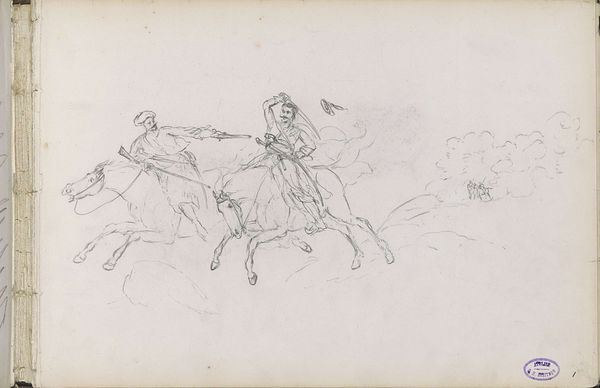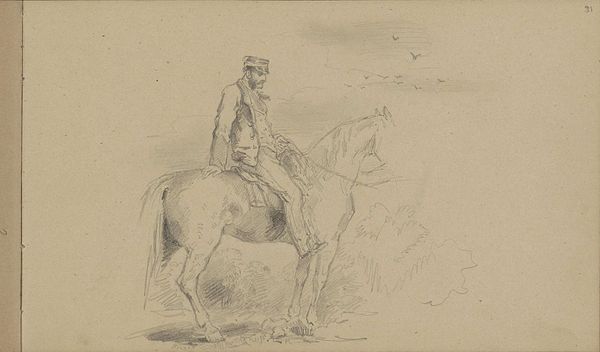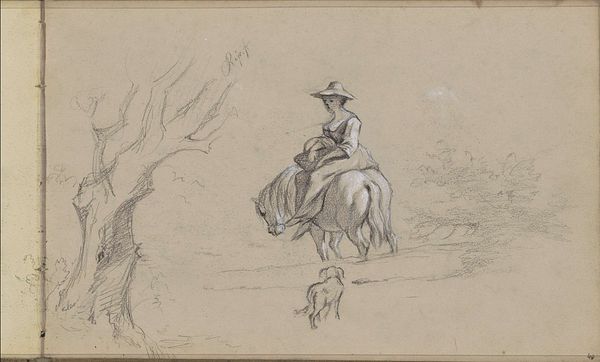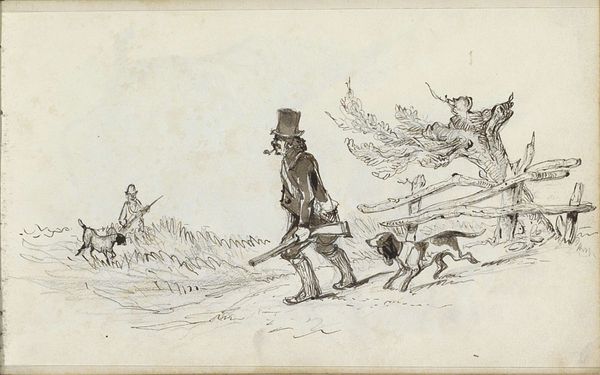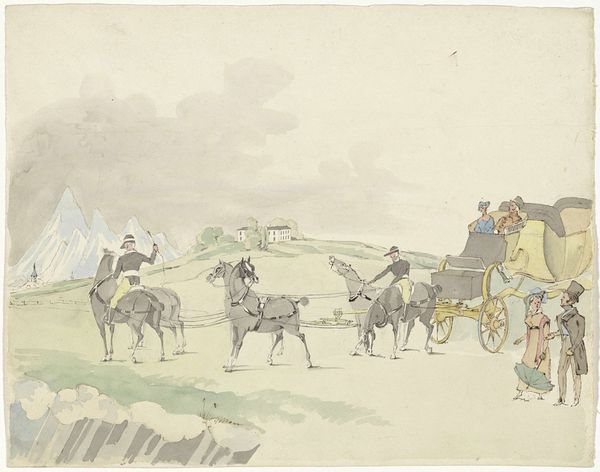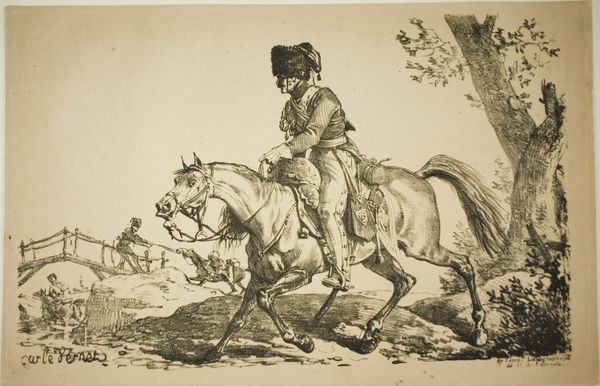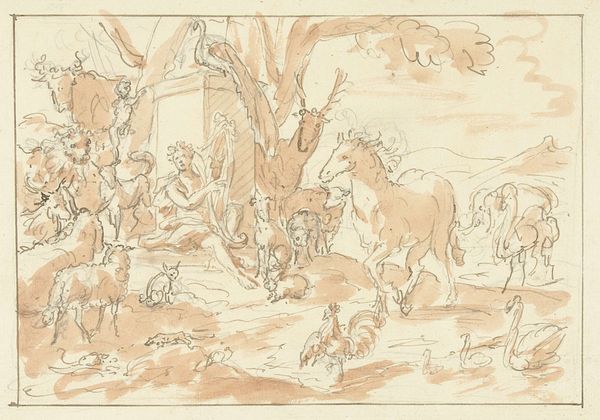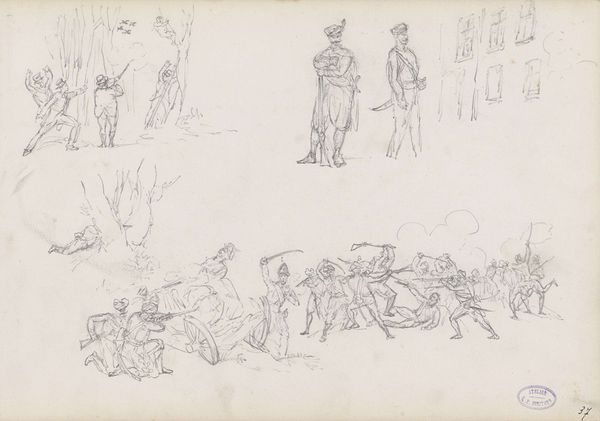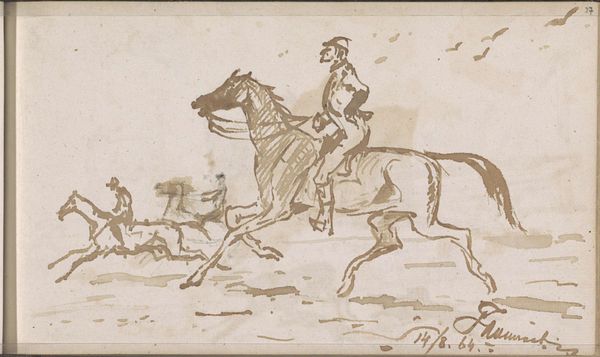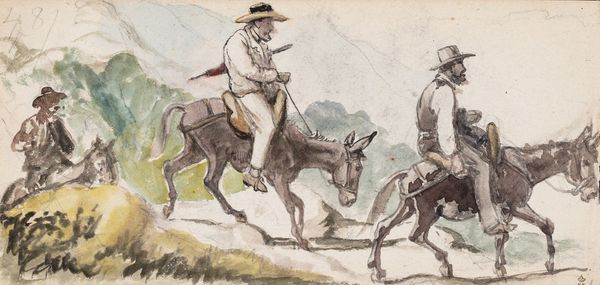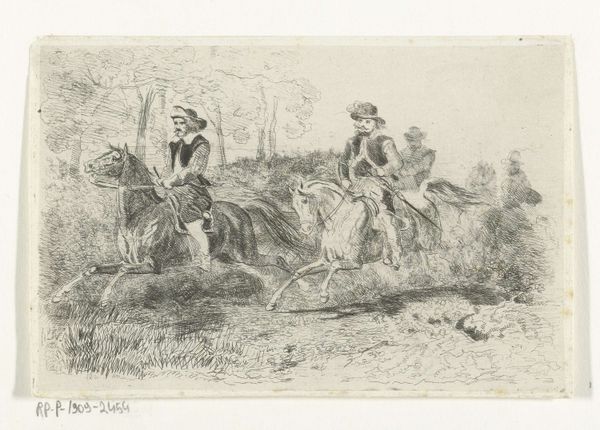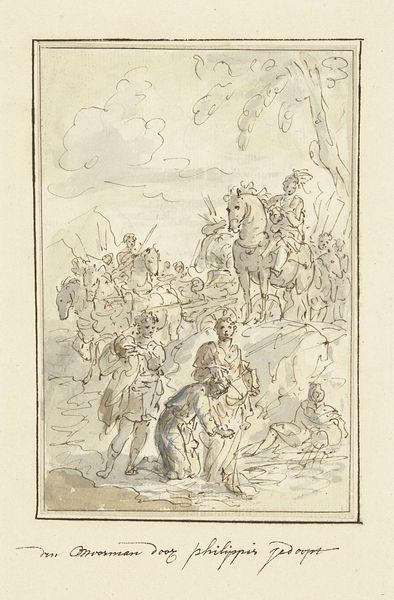
drawing, watercolor, pencil
drawing
pencil sketch
landscape
figuration
watercolor
romanticism
pencil
watercolour illustration
genre-painting
Copyright: Rijks Museum: Open Domain
Editor: This drawing, "Landschap met vier ruiters" or "Landscape with Four Horsemen", by Charles Rochussen, from around the mid-19th century, is primarily rendered in pencil and watercolor. I'm struck by the contrast between the sketch-like quality and the refined details on the figures, especially the central rider. What is your perspective on this piece? Curator: As a materialist, I find myself drawn to the evidence of process embedded within this work. Notice how the varying pressure of the pencil creates depth, suggesting both form and the labor involved. The quick, almost frantic lines denote the horses' energy. Consider the availability and cost of materials such as fine pencils and watercolor pigments in the 1840s; these were becoming increasingly accessible due to industrial advancements, influencing artistic output. Editor: So, you're saying the materials themselves played a role in shaping the artwork's appearance? Curator: Precisely! The burgeoning industrial revolution influenced artistic creation. Mass-produced art supplies allowed for greater experimentation, leading to changes in artistic styles. Rochussen’s choices -- the blend of drawing and watercolor techniques -- demonstrates how artists grappled with this shifting landscape. Do you see the influence on Rochussen's romantic depiction of daily life? Editor: Yes, I can see how this sketch suggests the burgeoning middle class enjoying leisure time, facilitated by industrial changes. Curator: Consider the paper itself. It likely was made of cheaper material than it had been earlier. The surface allowed for these quick, almost journalistic sketches. Editor: I never considered the impact of the availability of drawing paper. Curator: Thinking about these artworks not just as representations but as material objects deeply embedded in economic and social networks allows us a better grasp on the realities and values of the 19th century. Editor: I've learned to look beyond the surface depiction of horsemen and landscape to the broader production circumstances! Curator: Exactly, the "how" and "why" an object was made helps reveal how culture evolves over time.
Comments
No comments
Be the first to comment and join the conversation on the ultimate creative platform.

